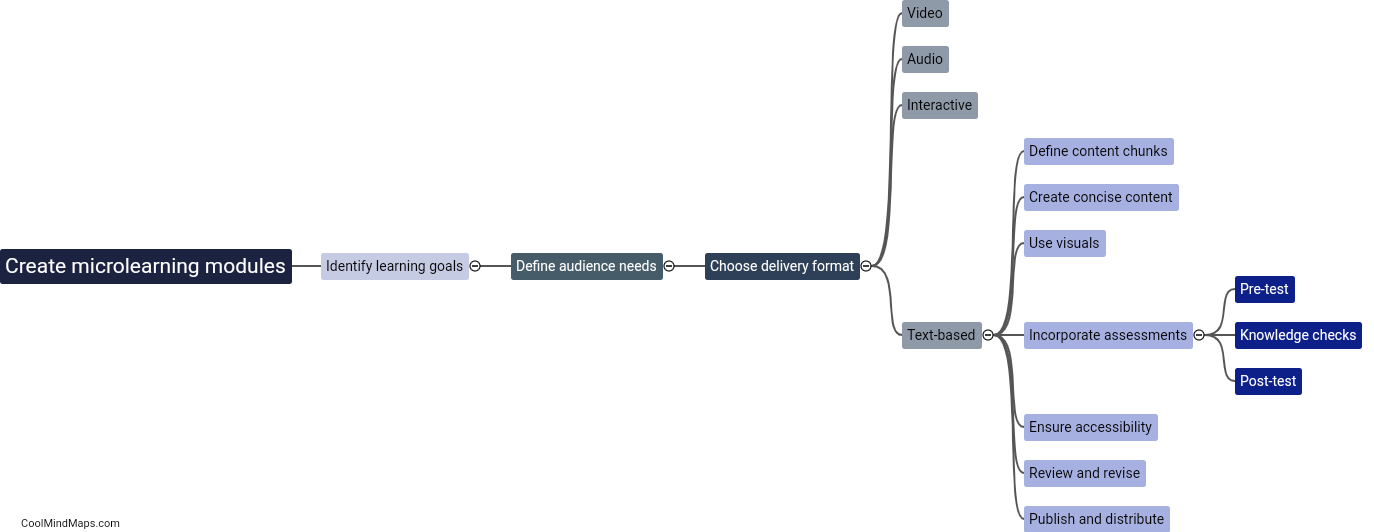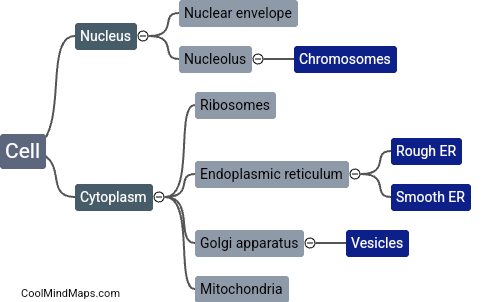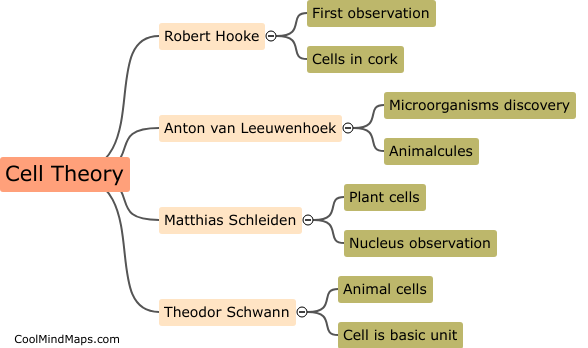How do the parts of a cell function?
The parts of a cell, such as the nucleus, cytoplasm, and organelles, work together in a coordinated manner to carry out various functions necessary for the cell to survive and thrive. The nucleus contains the cell's genetic material and controls the cell's activities, while the cytoplasm provides a medium for chemical reactions to occur. Organelles like mitochondria produce energy, while the endoplasmic reticulum and Golgi apparatus help in protein synthesis and processing. Each part of the cell has a specific role in maintaining the cell's structure and function, allowing it to perform essential tasks such as growth, metabolism, and reproduction.

This mind map was published on 25 July 2024 and has been viewed 61 times.











